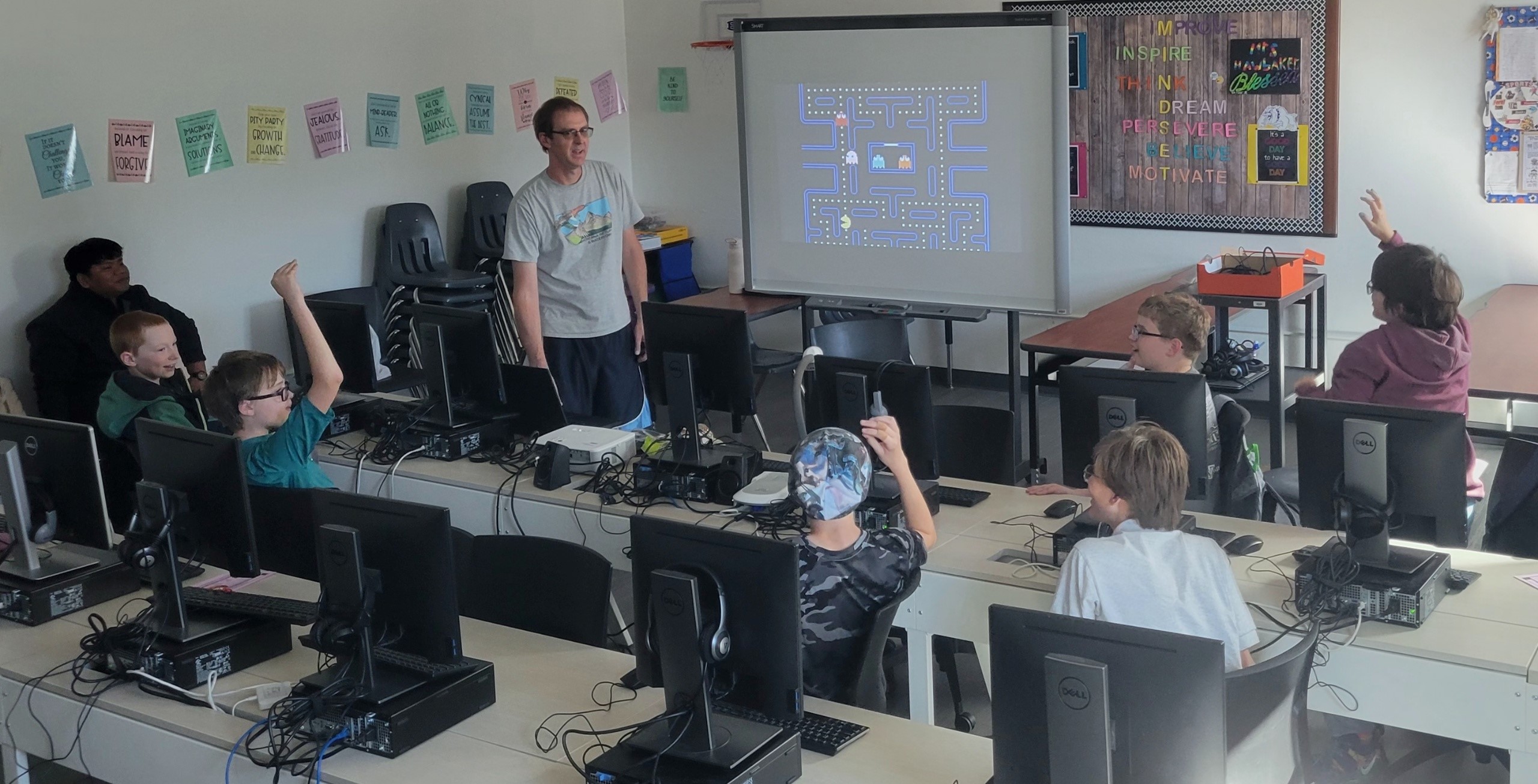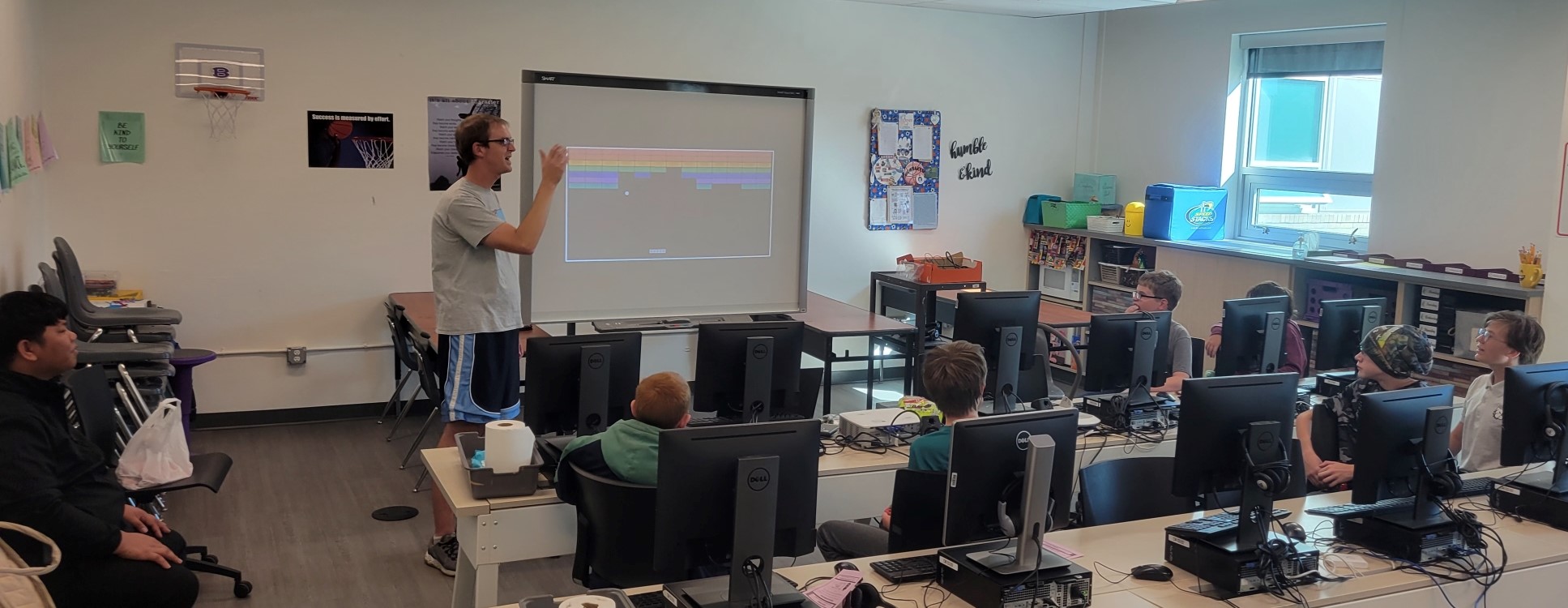Montana Tech professor, visiting fellow collaborate to expand reach of after-school coding program

Associate Biological Sciences Professor Dr. Joel Graff teaches coursework at Montana Tech that is as far from computer science as one can get. As a biologist, his focus is on living systems, and his course load includes classes in virology, immunology, and biotechnology.

For a long time, Graff yearned to expand his knowledge by learning to code.
“I tried to learn coding a few times as an adult,” Graff said. “When my research lab was shutdown for the COVID moratorium, I finally had enough time to commit.”

Graff found the best way to learn Python programming involved getting a little creative.
“The most fun way that I learned to code was following tutorials that made video games,” Graff said. “I could see the results of my coding. I could even play the game at the end of it. There is a lot of choice and creativity that was given.”
Graff started teaching his children coding through the video game teaching system created by MIT, Scratch.
“My kids enjoyed it, so I decided to bring it into the school,” Graff said.
Graff started an afterschool programming club at Margaret Leary Elementary School. The program was so popular Graff had to limit participation to third through sixth grade. Four years later, the club now takes place on Monday and Wednesday nights, with approximately 20 students each night. Graff said fellow parent Amanda Ellwein was a critical supporter of the club that allowed it to expand to a second night. STEAM teacher Laurie Hawbaker also is vital to the program’s success and serves as the faculty sponsor of the program, which expanded to East Middle School this year.
The after-school program has a heavy focus on critical thinking and scientific principles. Scratch is a drag and drop program that uses block coding. It allows students to learn without requiring them to get punctuation 100% correct.
“It’s a very well-designed website for teaching coding,” Graff said. “It was designed for an elementary-aged audience. There’s debate on whether people should learn computer programming at this point because you can ask a large language model to write the code for you. We are getting to a place where the actual coding is not as valuable as a skill, except that it teaches logic and organization. Even if I can ask a computer to write a program for me and guide it with natural language, the logic skills alone will serve the students well.”
Students use a number of different computer applications and programs to create their games. They create 2-D artwork in Inkscape and Krita. 3-D artwork is completed in Blender. Audio editing is done through Audacity. Thegame engine, such as Godot,that use physics principles to make realistic reactions to objects colliding in game.
“They are using physics concepts, math concepts,” Graff said. “If you are moving your character around in 2-D or 3-D you are doing geometry. There are also elements of animation, visual effects, and photography. It’s really an unbelievable way that’s 100% free to teach kids all sorts of different concepts that connect back to STEM.”
Graff’s program is very replicable, because all of the free, open sourced software and student’s projects are contained on a jump drive. Moreover, the apps are “portable” meaning they can run from the jump drive without installing or saving anything to the school’s computers.“I think it’s pretty neat that I don’t have to bog down school computers with software,” Graff said.
Graff recently sponsored exchange fellow Josh Soldivillo, of the Philippines. Soldivillo is the assistant principal of the Silliman University Senior High School Department. He spent a month at Montana Tech through the Young Southeast Asian Leaders Initiative Professional Fellows Program (YSEALI PFP).
Soldivillo will take what he learned back to his classroom in the Philippines. Graff says the pair is also exploring ways to share the program with other educators.
Graff has collaborated on other community projects, including installing a makerspace at the Science Mine in Butte, which required $20,000 in grants, and assisting with robotics club, which cost around $400 per robot kit. Those experiences have shown Graff how important it is to have low-cost opportunities available to students.
“Other than the cost of USB sticks, this program is entirely free,” Graff said.